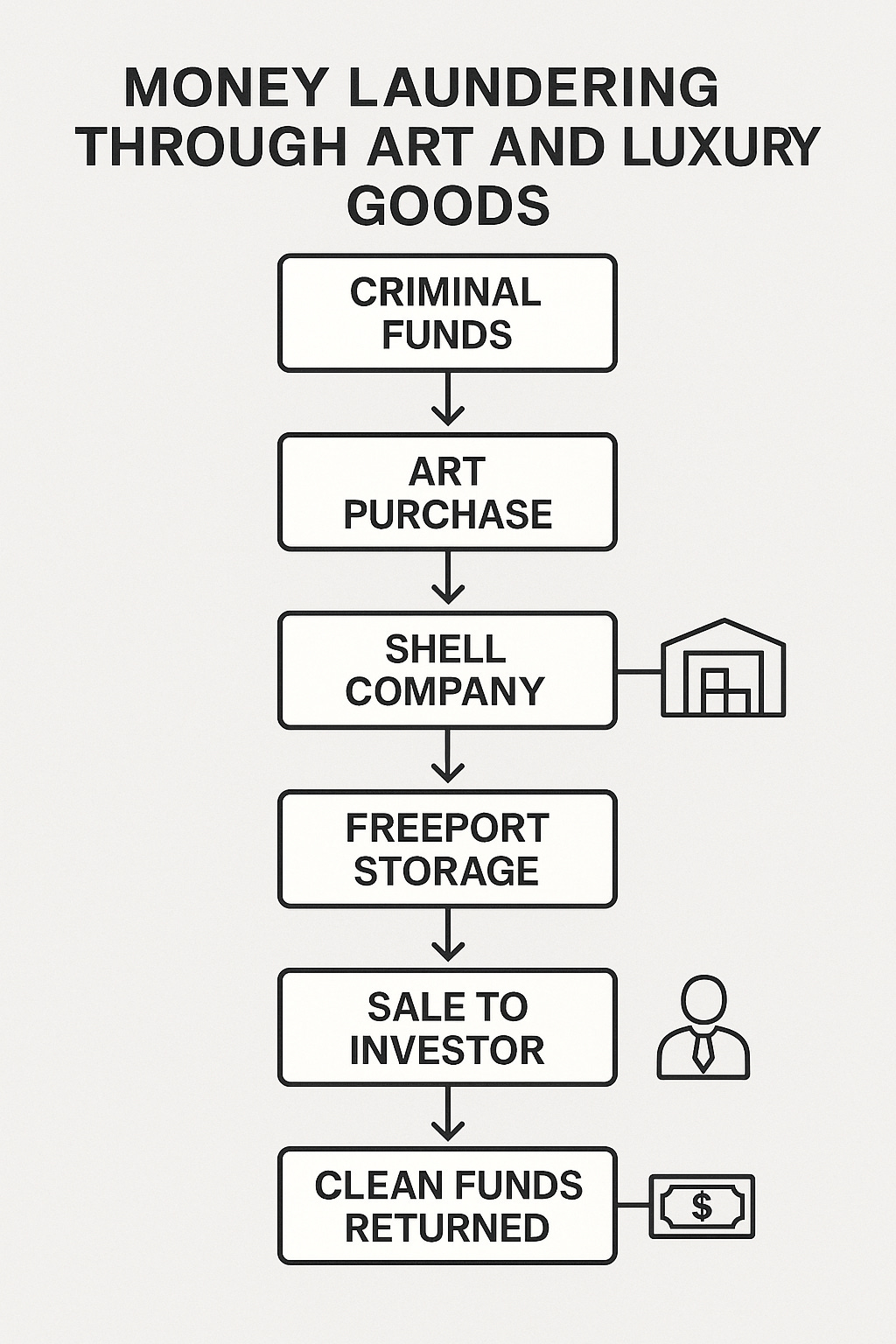Issue #12 - Inside the Canvas Crime: How Money Laundering Works Through Art and Luxury Goods
Polar Insider | Issue #12 | Week of 21 May 2025
🧊 Introduction
Hi there,
Welcome to another edition of Polar Insider. This week, we’re uncovering how art and luxury goods are being used as tools for money laundering. From shady transactions at auction houses to hidden freeports, we’re breaking down the risks.
Here’s what you’ll find inside this issue:
📌 Top Story – How Criminals Launder Money Through Art and Luxury Goods
🌍 Regulatory Roundup – Global action on luxury laundering risks
🔎 Case Study – The Yves Bouvier affair and the use of freeports in art laundering
🧰 Compliance Toolkit – Red flags, resources, and controls to mitigate risks
📌 Top Story
Inside the Canvas Crime: How Criminals Launder Money Through Art and Luxury Goods
What’s Happening?
Luxury items like art, rare cars, high-end watches, and designer goods have evolved far beyond mere symbols of status. They’ve become prime vehicles for money laundering due to their portability, subjective valuation, opacity in ownership, and limited regulatory oversight.
Unlike traditional assets, a $50M painting can cross borders with minimal scrutiny, be sold anonymously through auction houses, or sit hidden in freeports for decades.
How It Works:
Layering: Criminals purchase art, jewellery, or luxury vehicles using illicit funds, then resell them to clean the proceeds.
Anonymous Buyers: Shell companies and intermediaries hide beneficial ownership in auction and private sales.
Undervaluation/Overvaluation: Manipulating declared value helps move funds across jurisdictions with minimal detection.
Freeports: These tax-free storage zones allow artworks to remain in limbo, often out of regulatory reach.
Quick Stat:
💰 In 2024, the $65 billion art market saw fewer than 10% of its transactions undergo KYC or source-of-funds checks.
Why It Matters:
Luxury laundering is a hidden risk, exposing banks, insurers, wealth managers, and fintechs through financing, transfers, or collateral holdings.
What You Can Do:
Know the Market - Understand how art financing and luxury trade reporting work. Pay attention to odd patterns in incoming funds or rapid resales.
Increase Scrutiny - Adopt enhanced due diligence (EDD) when working with galleries, auction houses, or clients transacting in niche luxury goods.
Question Provenance: If the origin of funds or the asset’s history is unclear, escalate for investigation.
Educate and Monitor - Ensure frontline staff and clients understand how these schemes operate and what red flags to watch for, like sudden price inflations or vague provenance documentation.
🌍 Regulatory Roundup
The art and luxury markets are becoming harder for criminals to exploit as regulators intensify actions. Here’s what's new globally:
AMERICA
The U.S. Department of Treasury’s Financial Crimes Enforcement Network (FinCEN) unveiled a pilot program requiring galleries to report transactions above $100,000.
State-level legislation is targeting the hidden risks of freeports (specialized warehouses holding billions in art and collectibles).
EUROPE
The EU's 7th Anti-Money Laundering Directive (AMLD) introduces stricter identity verification measures for high-value goods dealers.
Art Basel introduced initiatives to improve transparency, including a push for blockchain technology to provide transaction records and trace artworks.
ASIA/OCEANIA
Singapore’s customs announced a crackdown on underreported import/export values linked to art shipments.
China doubled ongoing efforts to monitor the boom in NFT-based art sales, which carry similar laundering risks to physical artworks.
These developments indicate growing alignment among regulators to rein in crimes operating on the margins of global luxury markets.
🔎 Case Study
The Yves Bouvier Affair: How Art Deals Masked Billions in Transfers
What Happened:
Swiss art dealer Yves Bouvier acted as intermediary in over $2 billion worth of art deals for Russian billionaire Dmitry Rybolovlev. Allegedly, Bouvier inflated prices and pocketed the margins, all while transactions occurred through shell companies, offshore accounts, and freeports.
Tactics Used:
Bouvier used freeports to store paintings like a “warehouse bank” for illicit capital.
Ownership of masterpieces changed hands through layers of opaque intermediaries.
Funds were moved via Luxembourg entities, making them hard to trace and difficult for financial institutions to flag.
Outcome:
The scandal exposed how art can be used as a money laundering tool, leading to increased scrutiny in Switzerland, Monaco, and Singapore. Litigation is still ongoing.
Key Takeaways for Compliance Teams:
High-value art should raise EDD triggers, especially with offshore entities involved.
Provenance checks must include financial source-of-funds verification.
Freeport involvement is a red flag – assets stored in secrecy-prone jurisdictions require closer monitoring.
🧰 Compliance Toolkit
FATF Report: “Money Laundering Through the Art Market” offers deep insights into the mechanics of these schemes.
📎 Link → Read the ReportInterpol Guidebook: A resource for identifying fraudulent transactions in luxury markets, including best practices for reporting.
📎 Link → Download HereWEF’s Whitepaper on Blockchain: Discover how blockchain can improve transparency and reduce risks in art transactions.
📎 Link → Explore the Paper
💬 Quote of the Week
“The brushstrokes of a painting can hide more than beauty — they can hide a paper trail.”
— Amara Linden, Global AML Advisor, Financial Crimes Art Taskforce
🎁 Bonus for Subscribers
Don’t forget to download your copy of the 2025 Financial Crime Regulatory Tracker (USA, UK, AU).
Stay on top of AML requirements and enforcement trends globally.


